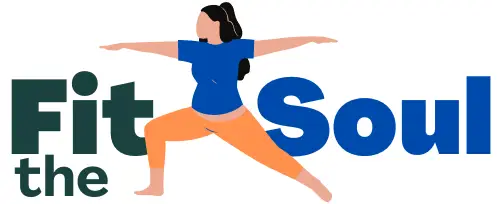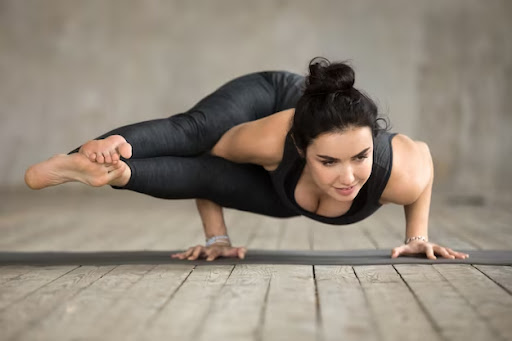Eight Angle Pose (Astavakrasana): A Guide to Mastering This Invigorating Yoga Asana
Understanding Astavakrasana
What is Astavakrasana?
Astavakrasana, often referred to as the Eight Angle Pose, is a remarkable yoga posture that requires balance, strength, and flexibility. It is a seated arm balance that combines twists, arm support, and leg positioning, creating a visually captivating and physically demanding pose.
The Symbolism Behind the Pose
Astavakrasana draws its name from the legendary sage Astavakra, who was born with eight deformities in his body. Despite his physical appearance, he possessed profound wisdom. This pose symbolizes the notion that true strength lies within, transcending outer appearances.
Benefits of Practicing Astavakrasana
Physical Benefits of Eight Angle Pose
Building Core Strength
Astavakrasana requires significant engagement of the core muscles to maintain stability. Regular practice can lead to strengthened abdominal muscles, obliques, and lower back.
Enhancing Arm and Wrist Strength
The weight-bearing nature of this pose strengthens your arms, wrists, and shoulders. Over time, you’ll notice improved upper body strength and endurance.
Improving Flexibility
Executing Astavakrasana demands flexibility in the hips, hamstrings, and spine. Consistent practice can gradually increase your body’s flexibility and range of motion.
Toning Abdominal Muscles
The twisting and balancing aspects of this pose provide a unique opportunity to tone and sculpt your abdominal muscles, leading to a stronger core.
Mental Benefits of the Pose
Cultivating Focus and Concentration
Maintaining balance in Astavakrasana requires unwavering concentration. As you hone your focus on the present moment, you’ll experience enhanced mindfulness.
Boosting Self-Confidence
Mastering a complex pose like Astavakrasana instills a sense of accomplishment and self-assurance, transcending into other areas of your life.
Managing Stress and Anxiety
The meditative nature of yoga, coupled with the physical challenge of Astavakrasana, releases endorphins, reducing stress and anxiety levels.
Preparing Your Body: Warm-up and Stretches
Before attempting the Eight Angle Pose, it’s essential to warm up your body and stretch your muscles. Engage in a gentle flow or practice some Sun Salutations to awaken your muscles and increase blood circulation. Focus on stretches that target your wrists, hips, hamstrings, and core. Poses like Downward Dog, Mountain Pose (Tadasana), Triangle Pose (Trikonasana), Plank, and Garland Pose are excellent choices to prepare your body for the upcoming challenge.
Step-by-Step Guide to Eight-Angle Pose
Preparing for the Pose
- Begin in a seated position on your mat.
- Extend your legs in front of you and flex your feet.
Entering the Pose
- Bend your right knee and place the foot close to the right hip.
- Shift your weight to your hands as you lift your hips slightly off the mat.
- Place your left ankle over your right thigh.
Creating the Twist
- Plant your palms firmly on the ground beside your hips.
- Press through your hands and engage your core as you twist your torso to the right.
- Hook your left arm outside your right knee, creating a bind.
Balancing Act
- Lean forward slightly, shifting more weight onto your hands.
- Engage your core and begin to lift your feet off the mat.
- Straighten your arms as much as possible, maintaining balance.
Finding Stability
- Keep your gaze focused ahead to aid in balancing.
- Distribute your weight evenly between your hands.
- Continue engaging your core to hold the pose.
Variations of Eight-Angle Pose (Astavakrasana)
Variations for Beginners
1. Classic Astavakrasana
The foundation of all variations, the classic Astavakrasana involves sitting on the floor with legs spread, shifting the weight onto the hands, and crossing the legs while maintaining balance.
2. One-Leg Extended Astavakrasana
This variation challenges the practitioner to extend one leg out while maintaining the balance on the other leg and hands. It intensifies the core engagement and requires heightened focus.
3. Revolved Astavakrasana
Adding a twist to the classic pose, the revolved variation involves twisting the torso while in the arm balance position. This not only enhances the spinal flexibility but also deepens the engagement of the oblique muscles.
4. Eight Angle Plank
A modification of the classic pose, this variation involves performing the pose in a plank position. It builds upper body strength and is a great transitional pose for beginners.
Variations for Advanced Practitioners
1. Floating Eight Angle
Taking the pose to the next level, the floating variation requires the practitioner to lift the feet off the ground while maintaining the balance on the hands. It demands exceptional core strength and control.
2. Eight Angle Headstand
Combining the benefits of Astavakrasana and headstand, this variation challenges practitioners to balance on their hands while the legs extend upwards. It cultivates balance, strength, and mental focus.
3. Astavakrasana with Lotus Legs
Incorporating the lotus posture, this variation brings an advanced level of hip flexibility into play. The practitioner balances on the hands while the legs are crossed in the lotus position.
4. Dynamic Flow with Astavakrasana
Integrating Astavakrasana into a flowing sequence adds a dynamic dimension to the practice. This variation enhances the fluidity of movement and challenges the practitioner’s adaptability.
Common Mistakes to Avoid
Neglecting Proper Alignment
Maintaining proper alignment is crucial in Astavakrasana. Failing to align your wrists, shoulders, and hips can lead to discomfort and strain.
Not Engaging the Core
Without engaging the core muscles, you won’t be able to achieve the necessary lift and stability. Focus on drawing your navel in towards your spine throughout the pose.
Forcing the Pose
Trying to force yourself into the pose without proper preparation can lead to injuries. Listen to your body and progress gradually.
Incorporating Eight Angle Pose into Your Yoga Routine
Once you’ve mastered Astavakrasana, you can incorporate it into your regular yoga routine. It’s an excellent addition to sequences that focus on arm balances, core strengthening, and hip flexibility.
Precautions and Contraindications
While Astavakrasana offers numerous benefits, it may not be suitable for everyone. Avoid this pose if you have wrist or shoulder injuries, carpal tunnel syndrome, or any recent abdominal surgeries. Prior to attempting this pose, especially if you have pre-existing conditions, it’s essential to seek guidance from a certified yoga instructor or a qualified healthcare professional.
Tips for Progression
Progressing in Astavakrasana requires patience and consistent practice. Start by perfecting each step before attempting the full pose. Regularly practice hip-opening stretches and core-strengthening exercises to support your progress.
Also Read: Firefly Yoga Pose (Tittibhasana): Mastering Balance and Strength
Conclusion
Frequently Asked Questions (FAQs)
- Is Astavakrasana suitable for beginners?
Astavakrasana is an advanced pose, but beginners can work towards it by practicing modifications and building the necessary strength. - How can I avoid straining my wrists while attempting this pose?
Proper alignment and distributing weight evenly through your hands can help prevent wrist strain. - Can Astavakrasana help with stress relief?
Yes, the concentration required for this pose can help calm the mind and reduce stress. - Is it necessary to have a strong core to do Astavakrasana?
Yes, a strong core is essential for maintaining balance and stability in this pose. - Can I practice Astavakrasana during pregnancy?
It’s best to avoid this pose during pregnancy, as it involves twisting and balance that might not be safe for expectant mothers.

